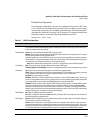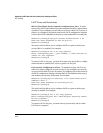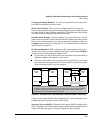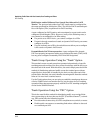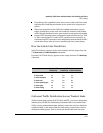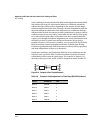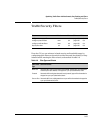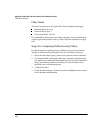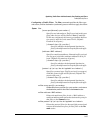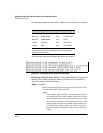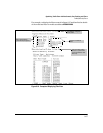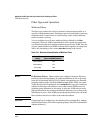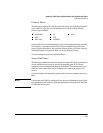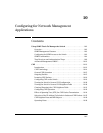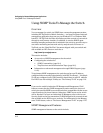
Optimizing Traffic Flow with Port Controls, Port Trunking, and Filters
Traffic/Security Filters
Configuring a Traffic Filter. The filter command specifies the filter type
and action, and the destination (outbound) ports on which to apply the action.
Syntax: filter
[source-port [ethernet] < port-number >]
Specifies one inbound port. Traffic received on this port
from other devices will be filtered. Note: If multiple
VLANs are configured, the source-port and the destina-
tion port(s) must be in the same VLAN. (Default:
Forward on all ports.)
[< forward | drop > [e] < port-list >]
Specifies whether the designated destination
port(s) should forward or drop the filtered traffic.
[multicast < MAC- address >]
Specifies a multicast address. Inbound traffic received
(on any port) with this multicast address will be fil-
tered. (Default: Forward on all ports.)
[< forward | drop > [e] < port-list >]
Specifies whether the designated destination
port(s) should forward or drop the filtered traffic.
[protocol < ip | ipx | arp | dec-lat | appletalk | sna | netbeui >]
Specifies a protocol type. Traffic received (on any port)
with this protocol type will be filtered. (Default: For-
ward on all ports.)
[< forward | drop > [e] < port-list >]
Specifies whether the designated destination
port(s) should forward or drop the filtered traffic.
no filter source-port [e] < port-number >
Deletes the source-port filter for < port-number > and returns
the destination ports for that filter to the
Forward action.
no filter multicast < MAC-address >
Deletes the multicast filter for the < MAC-address >
multicast address and returns the destination ports for
that filter to the Forward action.
no filter protocol < ip | ipx | arp | dec-lat | appletalk | sna | netbeui >
Deletes the protocol filter for the specified protocol and
returns the destination ports for that filter to the For-
ward action.
9-35



